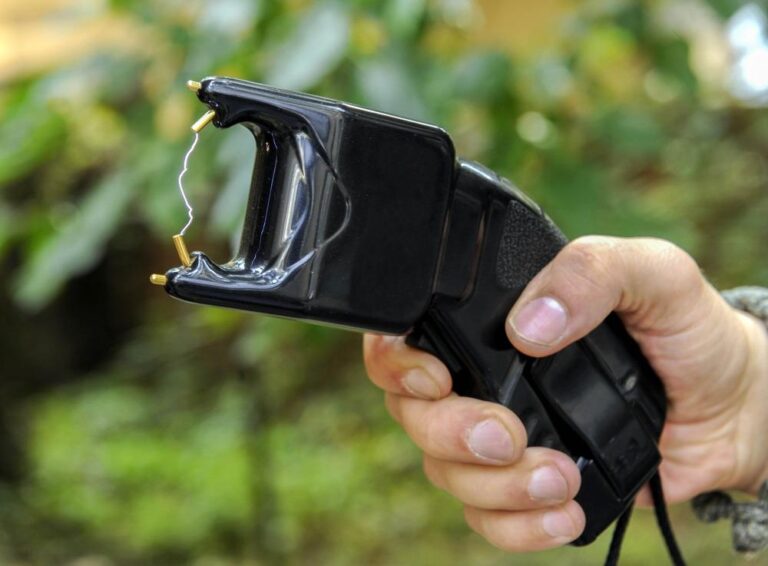Table of Contents
- California Enacts Comprehensive Ban on Stun Guns in Sensitive Locations
- Implications for Personal Security and Legal Compliance in Schools and Airports
- Guidelines for Residents on Adapting to New Stun Gun Restrictions
- Law Enforcement and Public Safety Perspectives on the Ban Implementation
- Insights and Conclusions
California Enacts Comprehensive Ban on Stun Guns in Sensitive Locations
In a decisive move to bolster public safety, California has passed a sweeping regulation that prohibits the possession of stun guns across designated sensitive venues. This new legislation explicitly targets areas that demand heightened security measures, aiming to reduce the risk of violent incidents. Among the key locations affected by this ban are educational institutions, airports, and government buildings, where the presence of such devices has raised significant concerns about potential misuse.
The law details a clear prohibition on carrying or possessing stun guns within these critical zones, reinforcing law enforcement’s authority to enforce compliance rigorously. Key points of the legislation include:
- Zero tolerance for stun gun possession in K-12 schools and university campuses
- Comprehensive restrictions in all commercial and private airports within state jurisdiction
- Ban extended to city halls, courthouses, and other government offices
- Enhanced penalties for violations designed to deter non-compliance
Implications for Personal Security and Legal Compliance in Schools and Airports
The recent prohibition on stun gun possession in designated public spaces such as schools, airports, and government buildings marks a significant shift in how personal security is legally managed across California. For individuals, this means adapting to stricter regulations that prioritize collective safety over private defense mechanisms. Compliance with these new rules is essential, as failure to adhere can lead to serious legal repercussions, including fines and possible criminal charges. It is imperative that both residents and visitors familiarize themselves with these restrictions to avoid inadvertent violations, particularly in high-traffic environments where security protocols are rigorously enforced.
Institutions must also revisit their security policies and training programs to align with the updated legal framework. Key considerations include:
- Enhanced Screening Procedures: Airports and schools will likely intensify screenings to ensure compliance, potentially affecting wait times and access protocols.
- Clear Communication: Posting visible signage and conducting awareness campaigns will be necessary to inform the public about the ban.
- Coordination with Law Enforcement: Establishing swift and effective responses to violations can help maintain a secure environment without disrupting daily operations.
Guidelines for Residents on Adapting to New Stun Gun Restrictions
Residents must familiarize themselves with the new law to ensure compliance and avoid penalties. It is essential to refrain from carrying stun guns in restricted areas including schools, airports, and government buildings. Individuals are encouraged to securely store stun guns at home or in private properties where possession remains legal. Additionally, verifying local ordinances is advisable as cities may implement supplementary rules regarding stun gun possession.
To adapt effectively, consider these key recommendations:
- Check your personal items before entering restricted locations to prevent unintentional violations.
- Educate family members and employees about prohibited zones to ensure awareness and adherence.
- Consult legal experts if uncertain about the implications of your stun gun ownership under the new regulations.
- Explore alternative personal safety devices that comply with California’s updated laws.
Law Enforcement and Public Safety Perspectives on the Ban Implementation
Law enforcement agencies have largely supported the recent ban on stun gun possession in sensitive locations such as schools, airports, and government buildings. Officials emphasize that these restrictions enhance public safety by reducing the risk of potential violent incidents and ensuring environments remain secure and free from unauthorized weapons. Many officers point out that the presence of stun guns complicates threat assessment during routine security checks and can escalate conflicts unexpectedly.
Public safety experts also underline the practical benefits of the ban, noting several key factors:
- Streamlined Security Protocols: Reducing stun gun possession allows security personnel to focus on clear, consistent threat identification.
- Enhanced Training Effectiveness: Officers are better able to prepare for real-life scenarios without the unpredictability posed by stun guns.
- Community Confidence: Reinforcing weapon restrictions in public sites builds trust in safety measures among the general populace.
While enforcement challenges remain, authorities are committed to robust education and monitoring programs to ensure compliance and promote safe public spaces throughout California.
Insights and Conclusions
In conclusion, California’s new legislation banning the possession of stun guns in schools, airports, and government buildings marks a significant step toward enhancing public safety and security in sensitive environments. As authorities implement these measures, the state aims to reduce potential risks associated with these devices while balancing the rights of responsible individuals. Stakeholders and the public will closely monitor the impact of this ban, assessing its effectiveness in maintaining safer communal spaces throughout California.Check Our Other Blogs
- StunGun – Your Trusted Source for Stun Guns, Laws, and Self-Defense Tips
- PepperSprayLaws – Your Trusted Resource for Pepper Spray Information
- StunGunLaws – Your Trusted Guide to Stun Gun Legality and Safety





